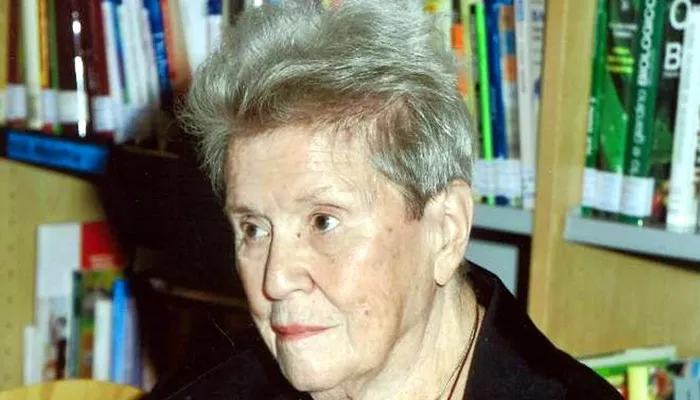Among the many voices that shaped Italian poetry in the 20th century, Alberta Bigagli stands out as a distinctive figure whose work reflects deep introspection and a nuanced understanding of human emotions. Although not always at the forefront of mainstream literary discussions, her contributions are essential to grasp the diverse landscape of Italian poetry during this period. Alberta Bigagli’s poetry is a window into the evolving styles and thematic concerns of 20th century Italian poets, offering Among readers insight into the poetic transformations Italy experienced during the last century.
The Context of 20th Century Italian Poetry
Italian poetry in the 20th century experienced significant shifts, influenced by both global movements and Italy’s unique historical context. This period saw a departure from traditional forms and a search for new expressions aligned with the turbulent political, social, and cultural changes Italy underwent. The century included World War I and II, the rise and fall of Fascism, post-war reconstruction, and rapid modernization, all of which deeply influenced Italian poets.
Poets like Eugenio Montale, Giuseppe Ungaretti, and Salvatore Quasimodo pioneered modernist poetry in Italy, introducing styles marked by hermeticism, symbolism, and a quest for new linguistic and emotional territories. These poets often explored themes of existential angst, identity, and the human condition, paving the way for subsequent generations to expand or contest these ideas.
Alberta Bigagli’s Place Among 20th Century Italian Poets
Born in 1928, Alberta Bigagli’s poetry emerged in the mid-20th century, a time when Italian poetry was rich with experimentation and reflection. Though she did not seek the widespread fame of some of her contemporaries, her work remains vital for its intimate style and philosophical depth.
Bigagli’s poetry is characterized by a contemplative tone and a lyrical quality that often explores themes of memory, identity, and the passage of time. Her verses reflect a personal yet universal voice, connecting individual experience with broader existential questions. This approach places her within the broader tradition of Italian poetry that seeks to probe beneath the surface of everyday reality to uncover deeper truths.
Themes and Style in Bigagli’s Poetry
Alberta Bigagli’s poetry often features a delicate interplay between silence and speech, presence and absence. Her use of language is economical but powerful, avoiding excessive ornamentation while maintaining emotional intensity. This minimalist style aligns her with the hermetic poets of Italy, who favored dense, symbolic language to convey complex feelings.
However, Bigagli’s work also differs from the often obscure or highly intellectual tone of some hermetic poets. Instead, her poems tend to be more accessible and rooted in sensory experiences, such as nature, familial ties, and personal memory. This balance makes her poetry resonate with readers who appreciate clarity combined with depth.
One recurring theme in Bigagli’s work is the concept of time—its fleeting nature and its impact on human consciousness. She reflects on how memory shapes identity and how past experiences linger in the present. This meditation on time places her alongside other 20th century Italian poets who grappled with history and personal narrative, including Giuseppe Ungaretti, whose war poetry captured fragmented moments and emotional immediacy.
Comparison with Contemporaries
To understand Alberta Bigagli’s contributions fully, it is useful to compare her with some of her contemporaries in Italian poetry.
Eugenio Montale (1896–1981), a Nobel Prize-winning Italian poet, is known for his symbolic and often enigmatic poetry that delves into the alienation of modern life. While Montale’s work is marked by a broad philosophical scope, Bigagli’s poetry tends to focus more intimately on the personal and the everyday, though both share a concern with existential themes.
Giuseppe Ungaretti (1888–1970) pioneered hermeticism and introduced poetry that was intense and stripped down. His work conveys the trauma of war and the fragility of human existence. Bigagli’s style, while less stark, shares the emphasis on essential language and the exploration of existential questions.
Vittorio Sereni (1913–1983) offers a middle ground between hermeticism and neorealism. His poems often depict landscapes and personal reflections. Bigagli’s poetry similarly employs imagery from nature and introspective meditation, though her tone is more quietly lyrical and less political than Sereni’s.
Unlike these poets, Alberta Bigagli’s work has remained more personal and less engaged in explicit political or social commentary, which was a major concern for many Italian poets in the post-war period. This choice makes her poetry a valuable complement to the more overtly historical and social poetry of her peers, emphasizing individual emotional landscapes.
Influence and Legacy
Though Alberta Bigagli may not have achieved the widespread acclaim of Montale or Ungaretti, her poetry contributes a unique voice to the canon of Italian poetry. Her introspective and nuanced exploration of personal themes offers an important counterbalance to the grand narratives of history and politics that dominate much of 20th century Italian poetry.
Bigagli’s work has inspired a quiet but devoted readership and has influenced poets who seek to express complex emotional states with simplicity and elegance. Her poetry is often studied in academic circles interested in the 20th century Italian poets, especially those whose work challenges the boundaries between personal lyricism and cultural diversity broader themes.
Conclusion
In the vast panorama of 20th century Italian poetry, Alberta Bigagli represents an important, though sometimes overlooked, figure. Her poetry embodies the delicate balance between personal reflection and universal meaning, combining simplicity of language with profound emotional insight. As an Italian poet working in the mid to late 20th century, Bigagli’s contributions enrich the understanding of Italian poetry’s evolution during a century of intense change.
By comparing her work with contemporaries like Montale, Ungaretti, and Sereni, readers can appreciate the diverse voices that shaped Italian poetry. Alberta Bigagli’s legacy lies in her ability to articulate the subtle interplay between memory, identity, and time, making her an essential part of the broader narrative of 20th century Italian poets.

